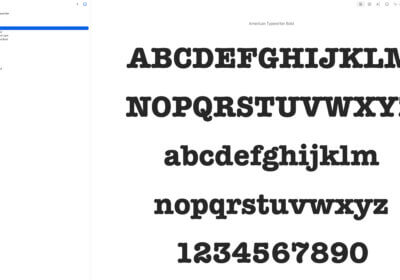Choosing the right font can be a crucial decision for banks as it can affect their customers’ perception of the bank’s professionalism, trustworthiness, and stability.

In this article, we’ll explore some of the most common fonts used by banks and what they convey.
Common fonts used by banks
Helvetica
One of the most recognizable fonts used by banks is Helvetica. This classic sans-serif font has been popular among banks for its clean and modern appearance. Helvetica is often used by banks that want to convey a sense of stability and trustworthiness. It’s also easy to read and works well in both digital and print media. Some banks that use Helvetica include Chase, Bank of America, and Wells Fargo.
Times New Roman
Another popular font used by banks is Times New Roman. This serif font is often associated with tradition and professionalism. It’s commonly used in financial reports and legal documents, and it can convey a sense of seriousness and importance. Times New Roman is often used by banks that want to emphasize their long-standing history and reputation. Some banks that use Times New Roman include JPMorgan Chase and Deutsche Bank.
Gotham
Gotham is another popular font used by banks. This sans-serif font has a modern and sleek appearance that conveys a sense of innovation and forward-thinking. It’s often used by banks that want to appeal to younger customers and convey a sense of innovation and technological savvy. Some banks that use Gotham include Citibank and Capital One.
Bank Gothic
Bank Gothic is a serif font that has been popular among banks for its bold and assertive appearance. It’s often used in logos and signage to create a sense of authority and power. Bank Gothic is commonly used by banks that want to convey a sense of strength and stability. Some banks that use Bank Gothic include Comerica and BB&T.
Custom fonts
Banks also often use custom fonts, designed specifically for their branding and marketing materials.
These fonts can be created to convey a specific message or to match the bank’s logo and overall brand identity.
Custom fonts can help create a unique and distinctive look that sets the bank apart from its competitors.
For example, HSBC uses a custom font called HSBC Sans that is based on Helvetica but has been modified to include the bank’s logo and branding.
Font colors and banks
In addition to the font itself, the use of color can also affect the way customers perceive a bank’s branding.
Many banks use blue as their primary color, as it conveys a sense of trust, reliability, and stability.
Green is also a popular color used by banks, as it can convey a sense of growth and financial well-being.
Black and white are also commonly used by banks, as they are classic and timeless colors that can convey a sense of professionalism and sophistication.
It’s important to note that font choice is just one element of a bank’s branding and marketing strategy.
Other factors, such as the bank’s logo, advertising campaigns, and customer service, can also play a significant role in how customers perceive the bank.
However, font choice can help reinforce the bank’s messaging and values and create a cohesive and recognizable brand identity.
Conclusions
In conclusion, fonts are an important element of branding and marketing, and banks are no exception.
Helvetica, Times New Roman, Gotham, and Bank Gothic are some of the most common fonts used by banks, each conveying a different message and tone.
Custom fonts can also be created to match a bank’s branding and create a unique look.
The use of color can also affect the way customers perceive a bank’s branding.
By carefully choosing fonts and other branding elements, banks can create a strong and recognizable brand identity that helps convey their values and messaging to customers.



